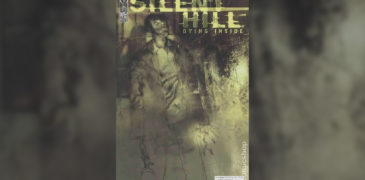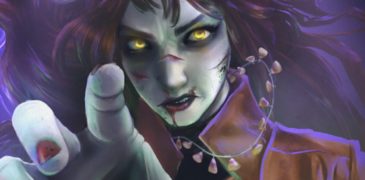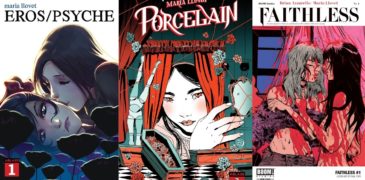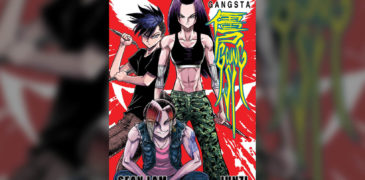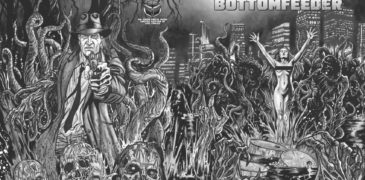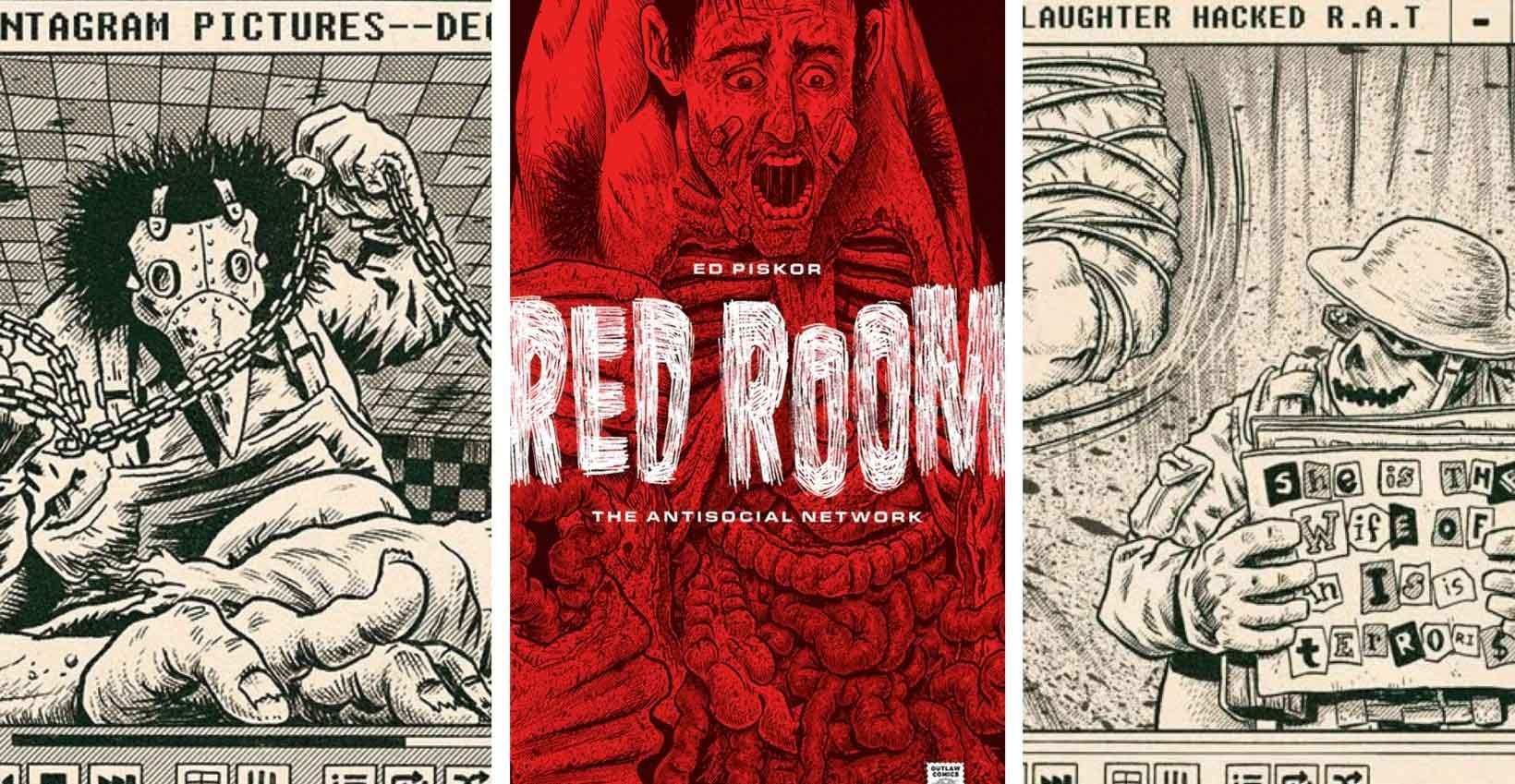
For as long as it has been a viable means for sharing media, the internet has been a fascination of the morbidly curious. Forums and sites set up on both the surface and deep web dedicated to the spread of gratuitous, real life videos of death, becoming common knowledge in our society and reflected in the media of the time. Films such as 8MM (1999) and Guinea Pig: Flower of Flesh and Blood (1985) are prime examples of how to utilized this trope effectively on both sides of the same proverbial coin.
However, with the evolution in the capability of internet speeds, this trope has also developed into a modern format. Red rooms are a concept of livestreams depicting and murder of a person at the beckon of paying viewers. Although, the plausibility of the means is questionable, as most browsers used to access the ‘dark’ web run through excessive relays to consequently disrupt any efficiency in video streaming. In spite of these pedantic limitations technically, this hasn’t stopped creators from adapting this into their imaginative projects and creating unique, thrilling work in the process. This style is starting to transcend film and progress into other mediums, such as the graphic novel Red Room: The Antisocial Network as the most recent and salient example.
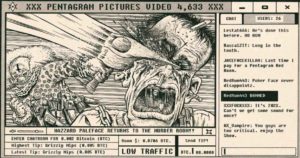
Red Room: The Antisocial Network Vol 1 is a violent graphic novel, consisting of the first four issues as well as first drafts, page by page commentary and much more. Written and illustrated by Ed Piskor, known for a multitude of works including the X-Men: Grand Design series for Marvel.
“Aided by the anonymous dark web and nearly untraceable cryptocurrency, a criminal subculture has emerged. It live streams murders as entertainment. Who are the killers? Who are the victims? Who is paying to watch? How to stop it? Red Room is constructed as a series of interconnected stories, shining a light on the characters who exist in the ugliest of corners in cyberspace.”
Red Room’s story is truly unique to the cyber crime subgenre of horror, choosing to not have a single main protagonist investigating this dark subject matter. Instead, the story focuses on the red rooms themselves, separately run by five crime families, all competing to be the biggest crowd pleasers and gain the highest amount of BTC in the process. Each issue is broken down into smaller stories that are all interconnected in the same world, focusing on the lives of people connected to this dark, depraved pastime. The cast range from the “artists” who perform these livestreams and even the different families of people whose lives are forever altered by them. This choice of a diversified structure is a refreshing approach to the subject matter, strengthening the morbid world constructed to encompass it.
Unapologetic in its display of violence, the artwork leaves little to the imagination to have a sufficiently raw feel. The savage livestreams take centre stage throughout, and are unyielding in both brutality and creativity through unscrupulous detail of hyper-realistic violence. The torture and deaths their victims, or “cows” as termed in the lore, endure show no end to their originality. Each family fights for superiority and popularity in this competitive business of murder for amusement – an odd but amusing social dynamic considering the dark context.
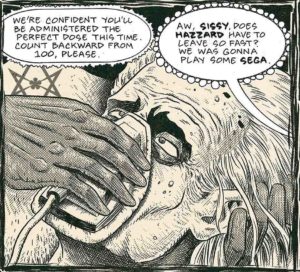
Set in a phenomenally detailed world, and impeccably crafted to mirror the real world’s dark underbelly, Ed Piskor has gone to great lengths to research and create a fully immersive setting for his story. Including small details such as deep web access and relevant coding, it also realistically explores the viable execution of operating such a business – an integral layer for a particular grit. Furthermore, creating interesting characters with detailed pasts, who are intriguingly similar to real life serial killers in terms of pathos, has made a believably inhabited, yet dark, world. Consequently, with so much going on in this world, it feels like the reader purposely experiences a tiny part of it at a time as an organic experience, solidifying the overall believability from the supposed depth.
As mentioned previously, Red Room contains an extensive cast of captivating characters. Each exhibit an over-exaggerated style to their design, drastically different from one another in both look and personality. Personalised speech bubbles for masked characters also helps differentiate between each individual, especially when multiple masked characters are conversing with each other to have prevented a confounding sequence. These scenes could easily become a confusing mess, yet with these intuitive solutions, this is a non-issue.
The graphic novel uses an atypical style of black and white panels as opposed to full colour, largely unseen in the West and more attributed to Asian comics. This could be an unusual change for an individual mostly accustomed to Western comics, lacking the crimson that such an unrestrained story could deliver. Regardless, this does not detract from the substantial visceral feel of its sadistic content.
Red Room: The Antisocial Network Vol 1 is available to pre-order from Fantagraphics website here and is available from 09 November.
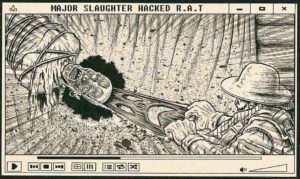
I thoroughly enjoyed this graphic novel. Its ability to escape the usual formula of the subgenre proves invigorating for someone that is a fan, such as myself. The mix of innovative storytelling with a thoroughly researched immersive world and merciless, unwaning carnage, exhibiting such nuances that it is extremely enamouring. Considering my enjoyment, the release of volume two in 2022 seem that much further away, I await eagerly for more as will most readers.
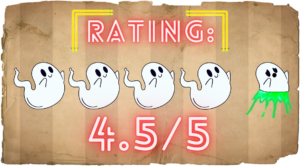
More Comic Reviews
Silent Hill is certainly one of the most beloved survival horror series to come out of Japan, with dedicated fans from all over the world falling in love with its… The name of Howard Phillips Lovecraft invokes various emotions among people today; adoration, disgust, interest, offense, suspense, and horror, to name a few. In my opinion, any talented author should… Here at the Grimoire of Horror, we were excited to take a look at the second volume of Halloween Girl, entitled Dead Reckoning. You can see our thoughts on the… Maria Llovet has been creating comics since 2011. As a Spanish-American author, illustrator, and animator, she is best known for Heartbeat and Eros/Psyche. Here at the Grimoire of Horror, we… Geungsi Gangster is an action thriller manga, written and illustrated by Singaporean artist Sean Lam, with additional writing from Junzi. The manga is part of Sean’s Geungsi series, working as… American comics have been in a slump, the mainstream dwelling in mundane content heavily focused on appeasing a small percentage of the fanbase. The result, mainstream/major companies struggling with sales…Silent Hill: Dying Inside (2004) Comic Review
HP Lovecraft’s The Call of Cthulhu and Dagon Illustrated by Dave Shephard – Graphic Novel Review
Halloween Girl Vol. 2: Dead Reckoning (2023) Comic Review – Grounded, Cathartic Spookems
Interview With Maria Llovet – Return to Oz, Psychology, and Sexuality
Geungsi Gangster (2023) Manga Review – Gangster’s Paradise
Bottomfeeder Graphic Novel Review – Oh What Wonderous Filth!

Hey there, I’m Jim and I’m located in London, UK. I am a Writer and Managing Director here at Grimoire of Horror. A lifelong love of horror and writing has led me down this rabbit hole, allowing me to meet many amazing people and experience some truly original artwork. I specialise in world cinema, manga/graphic novels, and video games but will sometime traverse into the unknown in search of adventure.
